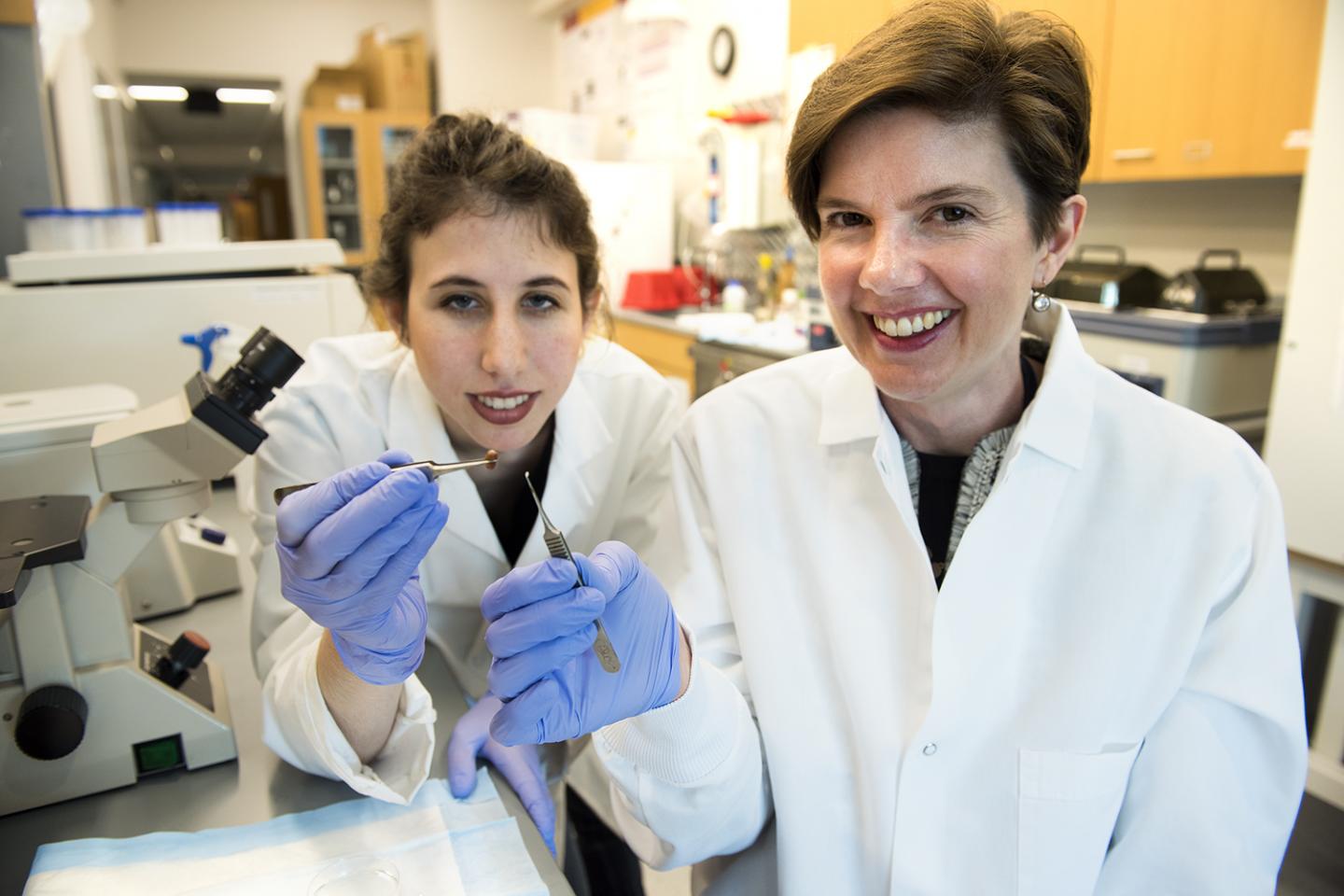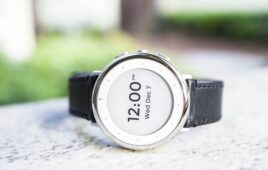
A team of biomedical engineering researchers has created a revolutionary 3-D-bioprinted patch that can help heal scarred heart tissue after a heart attack. Two of the researchers involved are biomedical engineering Associate Professor Brenda Ogle (right) and Ph.D. student Molly Kupfer (left). (Credit: Patrick O’Leary, University of Minnesota)
A team of biomedical engineering researchers, led by the University of Minnesota, has created a revolutionary 3D-bioprinted patch that can help heal scarred heart tissue after a heart attack. The discovery is a major step forward in treating patients with tissue damage after a heart attack.
The research study is published today in Circulation Research, a journal published by the American Heart Association. Researchers have filed a patent on the discovery.
According to the American Heart Association, heart disease is the No. 1 cause of death in the U.S. killing more than 360,000 people a year. During a heart attack, a person loses blood flow to the heart muscle and that causes cells to die. Our bodies can’t replace those heart muscle cells so the body forms scar tissue in that area of the heart, which puts the person at risk for compromised heart function and future heart failure.
In this study, researchers from the University of Minnesota-Twin Cities, University of Wisconsin-Madison, and University of Alabama-Birmingham used laser-based 3D-bioprinting techniques to incorporate stem cells derived from adult human heart cells on a matrix that began to grow and beat synchronously in a dish in the lab.
When the cell patch was placed on a mouse following a simulated heart attack, the researchers saw significant increase in functional capacity after just four weeks. Since the patch was made from cells and structural proteins native to the heart, it became part of the heart and absorbed into the body, requiring no further surgeries.
“This is a significant step forward in treating the No. 1 cause of death in the U.S.,” says Brenda Ogle, an associate professor of biomedical engineering at the University of Minnesota. “We feel that we could scale this up to repair hearts of larger animals and possibly even humans within the next several years.”
Ogle said that this research is different from previous research in that the patch is modeled after a digital, three-dimensional scan of the structural proteins of native heart tissue. The digital model is made into a physical structure by 3D printing with proteins native to the heart and further integrating cardiac cell types derived from stem cells. Only with 3D printing of this type can we achieve one micron resolution needed to mimic structures of native heart tissue.
“We were quite surprised by how well it worked given the complexity of the heart,” Ogle says. “We were encouraged to see that the cells had aligned in the scaffold and showed a continuous wave of electrical signal that moved across the patch.”
Ogle said they are already beginning the next step to develop a larger patch that they would test on a pig heart, which is similar in size to a human heart.




